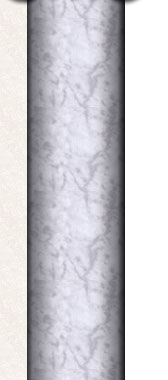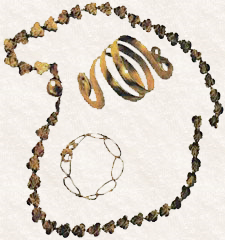 Since jewelry reflects the culture that produces it, the assertive, powerful, conquering Il Senso de Acqua produced a style of ornamentation that was strong, striking, and utilitarian. No romantic imagery, and no whimsicality -- just solid workmanship, elegant design, and rich materials. Like the empire, it was direct, unapologetic, pragmatic, and skilled at flattery. It made a definite statement by the sheer uncomplicated force of its simplistic beauty.
Since jewelry reflects the culture that produces it, the assertive, powerful, conquering Il Senso de Acqua produced a style of ornamentation that was strong, striking, and utilitarian. No romantic imagery, and no whimsicality -- just solid workmanship, elegant design, and rich materials. Like the empire, it was direct, unapologetic, pragmatic, and skilled at flattery. It made a definite statement by the sheer uncomplicated force of its simplistic beauty.
Gold is especially prized. Since it does not corrode or deteriorate, and is both permanent and incorruptible. It is the precious metal that most reflects Il Senso ideals.
Gold rings are considered a distinction reserved only for a particular class of persons, or dispensed for special occasions. Gold rings were bestowed, often as a military honor, on senators and Knights equo publico. Later, the reins loosened, and the privilege was extended to civilians.
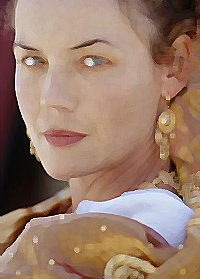 It is important to remember that jewelry serves as a badge of rank, as a symbol of status, as a protective amulet often reflecting religious beliefs and, most vividly, as a symbol of visible wealth.
It is important to remember that jewelry serves as a badge of rank, as a symbol of status, as a protective amulet often reflecting religious beliefs and, most vividly, as a symbol of visible wealth.
Noble women love necklaces and do not hesitate to show them off. The typical style is generous with pearls, amethysts, garnets, topazes and sapphires linked in bezel settings or held in place by fine silver, gold or brass wire. They are often coupled with patterns pierced in heavy sheet gold.
Popular motifs were the crescent, representative of the Moon, and the wheel, symbolic of the Sun, lions representative of strength and snakes representative of craftiness and mystery.
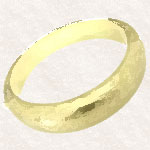 Bracelets are also popular in Il Senso and shared many of the same motifs and styles as necklaces and earrings. Ball earrings, for instance, had a counterpart in the ball bracelet. Engraved bangles, gem-set bracelets, bracelets with plaques, or those done in hollow gold beads, twisting coil bracelets and those with lion head terminals are fairly common. Wires were incorporated skillfully, as in a twist of wires arranged to form a large knot, or in a thick circlet of twisted wires whose ends were finished with a prominent setting that served as the mount for a projecting stone. A snake coiled in a double spiral had a high fashion profile in bracelets; other motifs seen are palmettos, fleeing dogs, acanthus leaves, spirals, ovoli, and bead sequences.
Bracelets are also popular in Il Senso and shared many of the same motifs and styles as necklaces and earrings. Ball earrings, for instance, had a counterpart in the ball bracelet. Engraved bangles, gem-set bracelets, bracelets with plaques, or those done in hollow gold beads, twisting coil bracelets and those with lion head terminals are fairly common. Wires were incorporated skillfully, as in a twist of wires arranged to form a large knot, or in a thick circlet of twisted wires whose ends were finished with a prominent setting that served as the mount for a projecting stone. A snake coiled in a double spiral had a high fashion profile in bracelets; other motifs seen are palmettos, fleeing dogs, acanthus leaves, spirals, ovoli, and bead sequences.
Stones and glass found their way into bracelets with the same regularity that they did in other forms of ornamentation. The armband, which is like a bracelet for the upper arm, is also popular, and range from the simple to the elaborate.
The fibulae, the practical pin that secures a tunic, is such a commonly used item that it can sometimes be seen immortalized in the marble bust of a senator or citizen, securing his tunic at the shoulder.
For hair ornaments, Il Senso women usually do up their coiffures with pins fashioned from gold, silver or ivory or diadems also made from the same materials. Additionally hair styles are frequently supplemented by wigs and hair pieces, frequently made of human hair.
Footwear
Footwear is also a key in determining a person's position in society. Women typically wear closed shoes that are either white, green or yellow. Men wear sandals. Patricians and persons of status tend to wear red sandals with an ornament at the back, where Senators wear brown footwear with black straps which wound round the leg to mid-calf, where the straps were tied. Consuls wore white shoes, and soldiers, heavy boots.
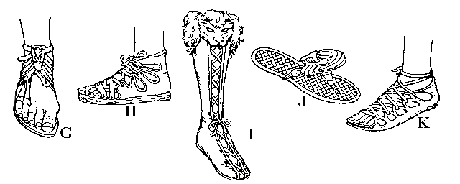 (G-H) The most common form of footwear was the sandal laced across the instep. (I) Boots like this called a cothurnus or buskin are regarded as divine garments and are supposed to be worn by the gods. Some emperors wore them too. Some people particularly soldiers and wagoners wore short ankle-length boots (peronis). (J) Philosophers and people who believed in the simple life wear these light sandals, often made of papyrus, (K) the cartabina, also laced across the top, are often worn by peasants.
(G-H) The most common form of footwear was the sandal laced across the instep. (I) Boots like this called a cothurnus or buskin are regarded as divine garments and are supposed to be worn by the gods. Some emperors wore them too. Some people particularly soldiers and wagoners wore short ankle-length boots (peronis). (J) Philosophers and people who believed in the simple life wear these light sandals, often made of papyrus, (K) the cartabina, also laced across the top, are often worn by peasants.






